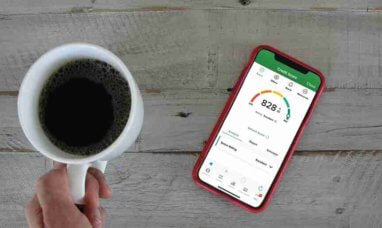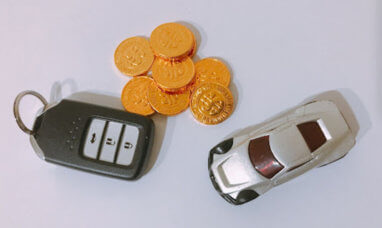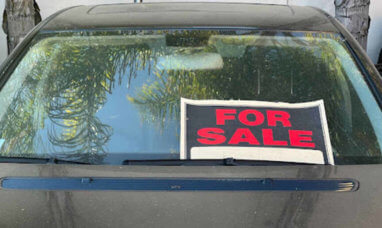To prove that you own a car, you must have a valid car title. A car title is a legal documentation showing who owns the car. It also mentions the car type, mileage, and Vehicle Identification Number (VIN).
Transferring a title is a crucial step when transacting a car. A seller must transfer a car title to the buyer for them to finish registering the vehicle. This guide helps you understand how to change and transfer a car title.
How a Car Title Transfer Works
Transferring a car title includes the seller and buyer observing the following steps.
The Seller
First, the seller completes the title part designated for them, which includes;
-
-
- Selling price and the date sold
- The car mileage as per the time of selling
- Signature to free any interest on the car
-
When the buyer pays the total amount, the seller grants them the car title with their filled-in section.
Some states need the seller to detach and give the car plate to the motor vehicle agency before title transfer. However, a seller may forgo doing this if they pass the plate to another car, but not a new holder.
Note:
The seller’s responsibilities vary from state to state. For instance, California requires sellers to fill in a Notice of Transfer and Release of Liability (NRL). After completing the NRL, please forward it to the Department of Motor Vehicles (DMV). The seller should do this within five days of the transaction.
The Buyer
The second step is for the buyer to complete their details in the title. The buyer’s details may include their name, purchase price signature, etc.
Again, the buyer’s responsibilities may vary from state to state, so you may want to confirm. For example, Florida requires a buyer to apply for a Title Certificate. It does not matter if you have a registration form or not.
To file the transfer, the buyer takes the title to the motor vehicle agency in their state. Using the information on the title, the state department processes it.
Note:
States have a time frame to submit the title with the motor vehicle authority office. Most states give a 30-day timeline. To avoid unnecessary penalties, observe the timeline given.
Transfer Costs
The buyer pays title transfer fees and other sales taxes incurred on the buying price.
When you complete these transactions, the DMV gives the buyer an interim title. After that, they send the permanent ownership via mail. The buyer then becomes the car’s official owner.
What You Should Bring to the Title Office
The requirements needed to transfer title ownership differ by state or municipality.
Buyers need to provide the following to transfer car titles to their name,
-
-
- The sale price or bill of sale
- More information on the car
- Title transfer fees and (or) the sales tax on the car which is on sale
-
The Bill of Sale
The bill of sale is complementary to a title. It is a document certifying ownership transfer between a seller and a buyer. But, a title signifies the legal ownership of a buyer.
Anytime you transact a car, ensure you write a Bill of Sale Form. The Bill of Sale is optional in some states. But in others like West Virginia (WV), the DMV requires you to get a specific Bill of Sale.
The WV DMV car bill of sale is crucial. Especially if you buy a car 50% lower than its NADA Clean Loan Book Value and you wish to title it within WV.
Complete the following information on the WV Bill of Sale Form:
-
-
- Name of the buyer and seller
- The make of the vehicle, model, and VIN
- The odometer reading of the car at the selling time
- Date of sale
- Signatures of both parties
- A notary public seal is essential. Have a notarized bill of sale for car with both parties’ signatories before a public notary
-
You can use the famous generic DMV Bill of Sale if the state you live in does not require a specific type.
Unlike the State of West Virginia, Form 4031 Bill of Sale verifies the sale and purchase of a car in South Carolina. Print out and write the form only in black ink.
Bill of Sale with Promissory Note for Automobile
Let’s say you have found a buyer for your car, and you are on the verge of finalizing the sale. A Bill of Sale with a promissory note certifies the purchase and promise by the buyer to clear the car payment. The payment may be in monthly instalments.
Whose Name is Listed?
As a seller, check how your name appears on the car title. If you are the car’s sole owner, only your name will be on the car title printout. Therefore, transfer of title ownership becomes easy.
A seller may have loan balances due. In this case, the lending institution, also called the lien-holder, will be on the title as an owner. You are better off clearing the outstanding loan balances to release the car title to your buyer.
If in such a situation, contact your lender and inquire how to go about the transaction. Handling transactions on car titles with liens differs from one firm to another.
Before welcoming the seller’s signed title, a buyer needs proof that the seller has paid off the debt. A buyer can check and confirm the car title status on the DMV’s title check portal. They can also verify the history report of a third party.
Often, couples own cars jointly. Here, the names of both spouses appear on the title. The title may list their names using either an ‘and’ or an ‘or’ linking them. An ‘and’ means that both persons must sign the title release ownership. On the other hand, an ‘or’ means that either spouse can sign the title.
Buyer’s Next Steps
If the signed title by the seller is in order, the buyer then registers the car in their name.
Some states permit you to apply for a new title and registration on the back page of the previous title. Or, you’ll download the transfer of ownership form from the DMV website of your state.
After you present the old title to the DMV, they issue you a short-term registration. Later on, they will email you the new title bearing your name as the new owner.
Featured Image: Twenty20








